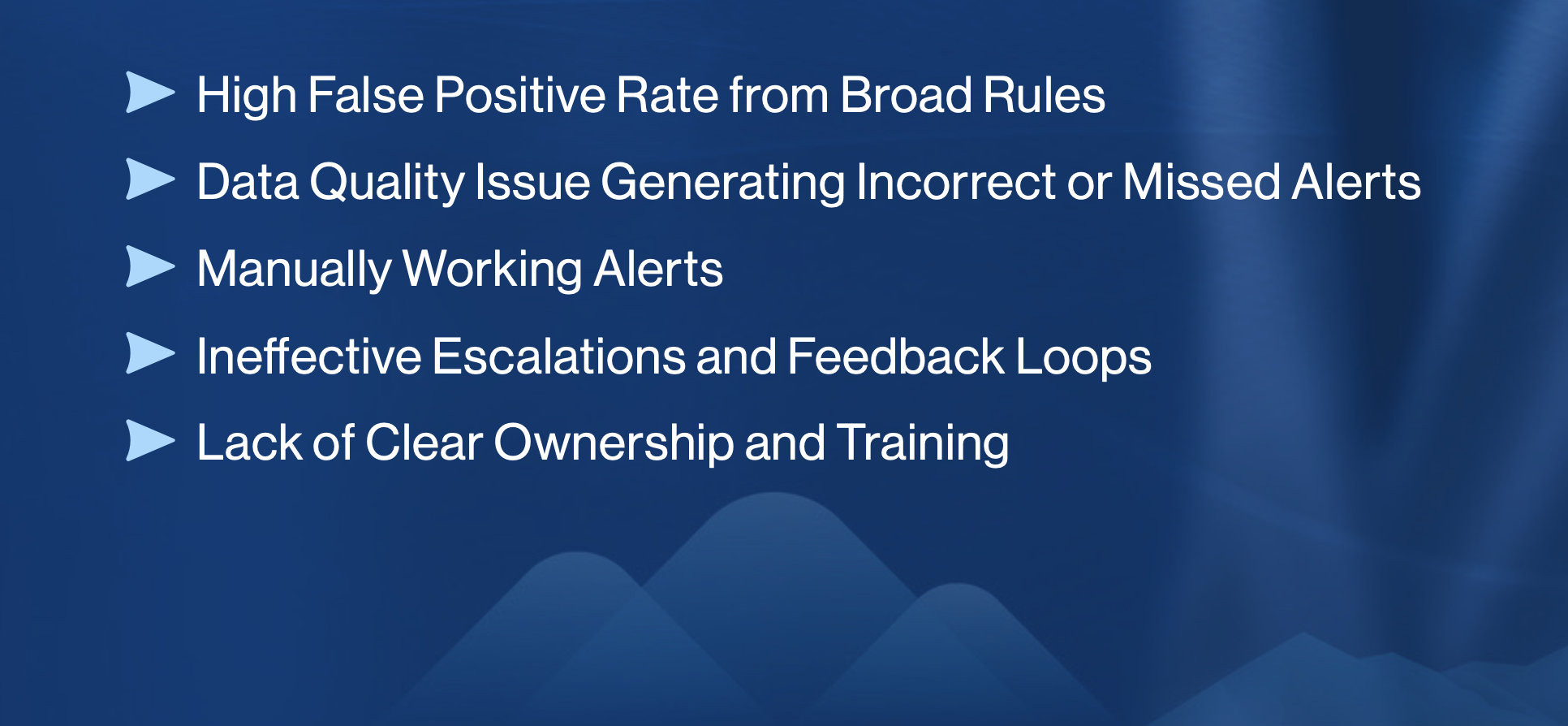We can do all the due diligence in the world, but without solid transaction monitoring, that great context building might not convert into practical value. A well-functioning, highly efficient transaction monitoring system is the best way of meeting our obligations to report suspicious activity so it’s a key one to get right, but there are pitfalls we should try to avoid along the way.
Here are the scenarios we’ve come across, as well as some tips on how to avoid them:
1. High False Positive Rate from Broad Rules
Pitfall
- We've seen situations where transactions over £3000 involving any offshore account are flagged for review
- Thousands of daily alerts were flagged, mostly false positives
- In this situation, staff were uncertain about what they were really looking for
Upgrade
- Implement regular rule reviews and conduct above and below the line testing
- Build in risk-based thresholds (is £3k reasonable?)
- Add in context-specific scenarios. Could the rule provide better results if it looked solely at transactions in some jurisdictions?
- Implement machine learning to identify patterns and improve
accuracy over time
2. Data Quality Issue Generating Incorrect or Missed
Pitfall
- In one example, customer data was suboptimal, the names were misspelled, and the addresses were outdated
- The firm was missing some alerts while generating inaccurate ones
- Machine learning efforts were struggling with data deficiencies
Upgrade
- Undertake data cleansing to increase reliability
- Collect updated data from customers, aiming for a good customer experience with quick, simple interactions
3. Manually Working Alerts
Pitfall
- We've worked with clients where every transaction monitoring task was worked by a person
- Queues had priorities but the lowest priority items were always running late
Upgrade
- Implement rules-based filters to automate alert triaging
- If capability exists, adopt machine learning to support triage
- Focus human intelligence and expertise on high-risk, high-priority cases
4. Ineffective Escalations and Feedback Loops
Pitfall
- We've seen situations where rules were static and subject to annual review
- False positives were increasing and emerging typologies were being missed
- QC and QA feedback were consistently about the same themes
Upgrade
- Implement more regular rule reviews, incorporating sample checks of true and false positives to update rules
- Ask your analysts what they're seeing and what challenges they have
- Adjust rules to adapt to emerging trends seen across the industry
- Utilise QC and QA data to resolve systemeic and learning issues
5. Lack of Clear Ownership and Training
Pitfall
- At one firm we've worked with, multiples teams were looking at the same alert queues
- Some alerts were getting lost, and some were being part-worked or worked twice before the mistake was recognised, causing loss of time
- Analysts without the right training couldn't make the right decisions and review quality is inconsistent
Upgrade
- Define roles and responsibilities
- Invest in ongoing training and knowledge sharing
- Pay close attention to QC feedback
- Update workflow tools to reduce chance of duplication
DCM has a lot of experience with TM and we can help you prevent pitfalls, locate the ones you might already have— and solve them. We can help you with rule tuning and testing, system assurance and enhancing policies and standards. Our Operations capability can clear your backlogs, whether once or on an ongoing basis.
Reach out to us to find out how we can help you make your TM system efficient, effective and fast.
